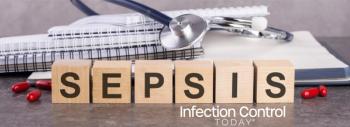
Deliberate Exposure of Humans to Chlorine in the Aftermath of Ebola in West Africa
During the recent Ebola outbreak, spraying of the environment and humans, including healthcare workers, with chlorine was widespread in affected African countries; adverse clinical effects are reported by
A cross sectional survey by interview of 1,550 volunteers consisting of 500 healthcare workers (HCWs), 550 Ebola survivors (EVDs) and 500 quarantined asymptomatic Ebola contacts (NEVD) was conducted. Demographics, frequency of exposure to chlorine, clinical condition after chlorine exposure particularly eye, respiratory and skin conditions were noted. The length of time HCWs worked in Ebola Treatment Units (ETU), and use of personal protective equipment was recorded. Verbal consent was obtained from all participants and all responses remained anonymous. Permission and assistance from the guardian or parent was sought for those below 18 years of age.
493/500 HCWs, 550/550 EVDs and 477/500 NEVDs were sprayed at least once with 0 · 5 % chlorine. Following even a single exposure, an increase in the number of eye (all three groups) and respiratory symptoms (in HCWs and EVDs) was reported (p < 0 · 001); after multiple exposure, respiratory and skin symptoms increased. In HCWs, multiple vs single exposure was associated with an increase in respiratory (OR = 32 (95 % CI 22 –49) p < 0.001), eyes (OR = 30 (95 % CI 21 –43) p < 0.001) and skin conditions (OR = 22 (95 % CI 15–32) p < 0.001). The available personal protective equipment neither reduced nor prevented the adverse effects of chlorine.
Reported exposure to chlorine has usually been accidental. Despite the lack of evidence as a recognized outbreak control measure, deliberate exposure of humans to chlorine spray was wide spread in Africa during the Ebola epidemic resulting in serious detrimental health effects on humans. We strongly recommend that this practice be banned and that alternative safer methods be used.
Reference: Mehtar S, et al. Deliberate exposure of humans to chlorine-the aftermath of Ebola in West Africa. Antimicrobial Resistance & Infection Control. 2016;5:45
Newsletter
Stay prepared and protected with Infection Control Today's newsletter, delivering essential updates, best practices, and expert insights for infection preventionists.






